#Water And Groundwater Systems
Text
look gotham probably has lead pipes, iykyk
#this is about how lead poisoning rates lead to higher crime rates cause lead poisoning fucks with your head#still hung up on the underground network of water and sewer pipes though#i bet gotham's filtration system is years out of date and the carbon filters need to be replaced#the fish in the harbor are mutated like dredge (video game)#cant rememver gotham's rivers and creeks but those are definitely contaminated too. therefore the groundwater most likely is#as well right. so what the fuck are they drinking in gotham. groundwater contamination is no joke and will kill you#gothamites built different i think#probably very common to die from liver diseases and malfunctions in gotham#or everyone is just slightly mutated from whatevers in the water and air#gotham would have a very high rate of lung and liver damage due to pollution and groundwater contamination
3 notes
·
View notes
Text
What is the Use of Modular Rainwater Harvesting System
Rainwater, often overlooked, is a precious resource waiting to be harnessed. Modular rainwater harvesting systems are an innovative way to capitalize on this vital natural resource, altering how we preserve water in an increasingly water-scarce world.
#Modular Rainwater Harvesting System#Rainwater Harvesting System#Rainwater Harvesting Solution#Restoring Watersheds#industrial rainwater harvesting#ways to recharge groundwater#rainwater harvesting#water auditing services#water audit services#rain water harvesting company in gurgaon
2 notes
·
View notes
Text
From this main root axis, lateral roots develop to form an extensively branched root system (Figure 5.8).

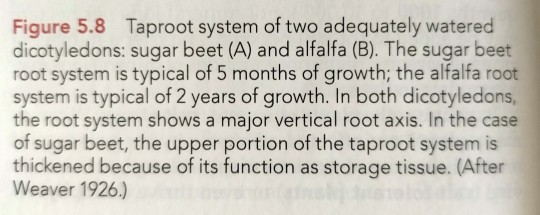
"Plant Physiology and Development" int'l 6e - Taiz, L., Zeiger, E., Møller, I.M., Murphy, A.
#book quotes#plant physiology and development#nonfiction#textbook#root system#dicot#dicotyledon#eudicots#sugar beet#alfalfa#taproot#plant growth#soil water#groundwater
3 notes
·
View notes
Text
Carbon Bulk Sales
We are the most trusted site for bulk carbon sales, carbon services, and sales of handheld equipment. We are a leading distributor of Solinst water level meters, RAE Systems handheld equipment, AMS soil samplers, Proactive groundwater pumps and more.
water level device
#carbon services#and sales of handheld equipment. We are a leading distributor of Solinst water level meters#RAE Systems handheld equipment#AMS soil samplers#Proactive groundwater pumps and more.
1 note
·
View note
Text
Automatic water level monitoring system (EWLR-101) from Encardio Rite for groundwater monitoring consisting of piezometer and datalogger
0 notes
Text
10 Simple Ways to Conserve Water in Your Home
Water is one of the most important resources on our planet. Yet, according to the World Wildlife Fund, over 1.1 billion people worldwide lack access to clean water, and this number is expected to rise in the coming years. Therefore, it is essential that we all do our part in conserving water, especially in our homes. In this article, we will provide you with 10 simple ways to conserve water in your home and help preserve this precious resource for future generations.

Table of Contents
Introduction
Fix Leaks Immediately
Upgrade to Water-Efficient Fixtures
Shorten Your Showers
Turn off the Tap When Brushing your Teeth or Shaving
Only Run Full Loads in the Dishwasher and Washing Machine
Collect and Reuse Rainwater
Water Your Lawn and Garden in the Morning or Evening
Use a Broom Instead of a Hose to Clean Driveways and Sidewalks
Install Low-Flow Toilets
Conclusion
FAQs
Fix Leaks Immediately
One of the most significant sources of water waste in the home is leaky faucets and pipes. A dripping faucet can waste up to 20 gallons of water per day, while a leaking toilet can waste up to 200 gallons per day. Therefore, it is important to fix leaks as soon as they are detected. Check for leaks regularly and repair them immediately.
Upgrade to Water-Efficient Fixtures
Another way to conserve water is to upgrade to water-efficient fixtures. This includes faucets, showerheads, and toilets. Water-efficient fixtures use less water while still providing the same level of performance. For example, a low-flow showerhead can save up to 2.5 gallons of water per minute.
Shorten Your Showers
A typical shower uses about 2.5 gallons of water per minute. Therefore, shortening your showers can significantly reduce your water usage. Try to limit your shower to five minutes or less. This will not only conserve water but also save you money on your water bill.
Turn off the Tap When Brushing your Teeth or Shaving
Another easy way to conserve water is to turn off the tap when you're brushing your teeth or shaving. Leaving the tap running can waste up to two gallons of water per minute. Instead, fill a cup with water for rinsing or turn off the tap while brushing your teeth or shaving.
Only Run Full Loads in the Dishwasher and Washing Machine
Dishwashers and washing machines use a lot of water. Therefore, it is important to only run them when you have a full load. This will not only conserve water but also save you money on your energy bill.
Collect and Reuse Rainwater
Collecting rainwater is an excellent way to conserve water in your home. You can use rainwater for watering your lawn and garden or washing your car. Simply install a rain barrel under your downspout to collect the rainwater.
Water Your Lawn and Garden in the Morning or Evening
Watering your lawn and garden during the hottest part of the day can lead to water waste. This is because the water will evaporate before it has a chance to soak into the soil. Therefore, it is best to water your lawn and garden in the early morning or late evening when the temperatures are cooler.
Use a Broom Instead of a Hose to Clean Driveways and Sidewalks
Using a hose to clean your driveway or sidewalk can waste a lot of water. Instead, use a broom to sweep away the dirt and debris. This will not only conserve water but also give you some exercise.
Install Low-Flow Toilets
Toilets are one of the largest consumers of water in the home. An older toilet can use up to 7 gallons of water per flush, while a newer, low-flow toilet uses as little as 1.6 gallons per flush. Installing a low-flow toilet can save up to 13,000 gallons of water per year, per person.
Use a Pool Cover
If you have a pool, using a pool cover can help reduce water loss through evaporation. A pool cover can reduce water loss by up to 90%, which can save you a significant amount of water over time.
Fix Your Sprinklers
Sprinklers that are not working properly can waste a lot of water. Check your sprinklers regularly to make sure they are working correctly. Repair or replace any broken sprinklers, and adjust them to avoid watering sidewalks or driveways.
Compost Instead of Using a Garbage Disposal
Using a garbage disposal can waste a lot of water. Instead of using a garbage disposal, consider composting your food waste. This will not only conserve water but also provide you with nutrient-rich compost for your garden.
Use a Water Meter
Installing a water meter can help you track your water usage and identify areas where you can conserve water. By monitoring your water usage, you can adjust your habits and reduce your water consumption.
Conclusion
Water conservation is essential for the health of our planet and our communities. By implementing these 10 simple ways to conserve water in your home, you can do your part in preserving this valuable resource for future generations. Remember, every drop counts.
0 notes
Text
Scientists have developed a new solar-powered system to convert saltwater into fresh drinking water which they say could help reduce dangerous the risk of waterborne diseases like cholera.
Via tests in rural communities, they showed that the process is more than 20% cheaper than traditional methods and can be deployed in rural locations around the globe.
Building on existing processes that convert saline groundwater to freshwater, the researchers from King’s College London, in collaboration with MIT and the Helmholtz Institute for Renewable Energy Systems, created a new system that produced consistent levels of water using solar power, and reported it in a paper published recently in Nature Water.
It works through a process called electrodialysis which separates the salt using a set of specialized membranes that channel salt ions into a stream of brine, leaving the water fresh and drinkable. By flexibly adjusting the voltage and the rate at which salt water flowed through the system, the researchers developed a system that adjusts to variable sunshine while not compromising on the amount of fresh drinking water produced.
Using data first gathered in the village of Chelleru near Hyderabad in India, and then recreating these conditions of the village in New Mexico, the team successfully converted up to 10 cubic meters, or several bathtubs worth of fresh drinking water. This was enough for 3,000 people a day with the process continuing to run regardless of variable solar power caused by cloud coverage and rain.
[Note: Not sure what metric they're using to calculate daily water needs here. Presumably this is drinking water only.]
Dr. Wei He from the Department of Engineering at King’s College London believes the new technology could bring massive benefits to rural communities, not only increasing the supply of drinking water but also bringing health benefits.
“By offering a cheap, eco-friendly alternative that can be operated off the grid, our technology enables communities to tap into alternative water sources (such as deep aquifers or saline water) to address water scarcity and contamination in traditional water supplies,” said He.
“This technology can expand water sources available to communities beyond traditional ones and by providing water from uncontaminated saline sources, may help combat water scarcity or unexpected emergencies when conventional water supplies are disrupted, for example like the recent cholera outbreaks in Zambia.”
In the global rural population, 1.6 billion people face water scarcity, many of whom are reliant on stressed reserves of groundwater lying beneath the Earth’s surface.
However, worldwide 56% of groundwater is saline and unsuitable for consumption. This issue is particularly prevalent in India, where 60% of the land harbors undrinkable saline water. Consequently, there is a pressing need for efficient desalination methods to create fresh drinking water cheaply, and at scale.
Traditional desalination technology has relied either on costly batteries in off-grid systems or a grid system to supply the energy necessary to remove salt from the water. In developing countries’ rural areas, however, grid infrastructure can be unreliable and is largely reliant on fossil fuels...
“By removing the need for a grid system entirely and cutting reliance on battery tech by 92%, our system can provide reliable access to safe drinking water, entirely emission-free, onsite, and at a discount of roughly 22% to the people who need it compared to traditional methods,” He said.
The system also has the potential to be used outside of developing areas, particularly in agriculture where climate change is leading to unstable reserves of fresh water for irrigation.
The team plans to scale up the availability of the technology across India through collaboration with local partners. Beyond this, a team from MIT also plans to create a start-up to commercialize and fund the technology.
“While the US and UK have more stable, diversified grids than most countries, they still rely on fossil fuels. By removing fossil fuels from the equation for energy-hungry sectors like agriculture, we can help accelerate the transition to Net Zero,” He said.
-via Good News Network, April 2, 2024
#water#water scarcity#clean water#saline#desalination#off grid#battery technology#solar power#solar energy#fossil fuels#water shortage#india#hyderabad#new mexico#united states#uk#united kingdom#good news#hope#aquifers
992 notes
·
View notes
Text
Chemical engineers at the University of British Columbia have developed a new treatment that traps and treats PFAS substances—widely known as "forever chemicals"—in a single, integrated system.
The research appears in Nature Communications Engineering.
Per- and polyfluoroalkyl substances (PFAS) are widely used in manufacturing consumer goods like waterproof clothing due to their resistance to heat, water and stains. However, they are also pollutants, often ending up in surface and groundwater worldwide, where they have been linked to cancer, liver damage and other health issues.
Continue Reading.
#Science#Environment#Chemistry#Materials Science#Plastics#Per- and Polyfluoroalkyl Substances#PFAS#Pollution#Recycling#Canada#British Columbia
328 notes
·
View notes
Text
The siege over Gaza includes the damming of groundwater for the benefit of the Israeli settlements surrounding Gaza. On the Israeli controlled side are miles of field crops—strawberries, melons, herbs, and cabbages—irrigated by state-of-the-art watering systems and benefiting from the majority of aquifer waters. To the eyes of the colonizer, looking from across the fences, Palestinian lands seem like dead lands. It wasn't always like that, from the time of the British Mandate to the turn of the twenty-first century, as this book makes clear, despite displacement and occupation, the area was plentiful with orange groves, fruit orchards, and sustenance fields. All this is now gone. East of the siege lines, the landscape immediately turns dry. It includes a hundreds-of-meters-wide liminal zone in which the mere presence of any agriculture at all is based on nothing but the ingenuity of its Palestinian farmers, cultivating with little available water.
The desertification of the perimeter of Gaza is part of the mechanism of its control. Israel routinely sends its bulldozers over the fence to uproot crops and destroy plantation and green houses. As a Forensic Architecture investigation initiated and coordinated by Shourideh Molavi strongly demonstrated, Israel continuously expanded the military no-go area—or "buffer zone". Its use of aerial crop-dusters to spray a toxic plant-killing herbicide mobilized the wind to carry toxic clouds into Gaza territory, destroying agricultural lands hundreds of meters away. Bulldozers on land and toxic clouds in the air, transformed a once lush and agriculturally active border zone into parched ground, cleared of vegetation, a colonial-made desert.
This "desertification" provided the Israeli military with uninterrupted lines of sight and fire into Gaza, leaving Palestinian civilians, including farmers, youth and families, exposed to Israeli sniper fire. In this hundreds-meter-thick buffer zone, more than two hundred Palestinian demonstrators were shot and killed in the 2018–19 demonstrations of The Great March of Return and thousands more maimed.
The desertification of Gaza is presented as a retroactive proof for a core element of Zionist ideology—one that imagined Jews as having returned to a desolate, neglected "dead land," and having revived it. This is the core of the Zionist meteorological imaginary of "making the desert bloom." The Nakba, the loss of a Palestinian homeland starting 1947, is made out of a sequence of acts, massacres, enforced displacements, land dispossession, settlement, and the ongoing daily violence meant to repress the desire for liberation and the hope of return. The Nakba has also a lesser-known environmental dimension, the complete transformation of the environment, the weather, the soil, the loss of the indigenous climate, the vegetation, the skies. The Nakba is a process of colonially imposed climate change.
Eyal Weizman, from the foreword to Shourideh C. Molavi's Environmental Warfare in Gaza: Colonial Violence and New Landscapes of Resistance
49 notes
·
View notes
Note
Hello,I know this is not the place to ask for it, but I don't have a single idea where to ask , so if the mods , the followers or anyone seeing this post could answer??
So I'm gonna write a fic, and there's a major plot hole I'm not able to overcome, I know taps didn't exist in the era mdzs canon is set in, and there's mentions on bathing using buckets to fill up tubs. What my question is, is how and where they went to toilet? Especially the disposal? Like in modern system, there's pipeline for everything. But back then how was it?
It may seem silly questions haha, but these are quite important to my plot. My plot exactly needs, how one (in the canon era) goes to toilet inside their house, takes a bath/shower without tubs (this one's easy, with mugs and buckets) , how they get water inside house when there's no river or lake or pond nearby or even in a mile radius.
One more question, how did they save the food from spoiling? And again waste disposal, inside the house, how did they do it??
I urgently need some helpful advice and answers to these, HELP-
To preface, I'm answering this question because I have ADHD and it piqued my interest so I spent like a full hour just reading articles lol I would suggest trying to find a blog that focuses on Ancient China or even just history in general, you can also just look for documentaries/history papers/articles about the subject.
For the toilet question -
From what I found through a google search, they either had a hole dug into the ground with two bricks on either side so they could squat down and go, had a public hole where everyone went (and had to pay), or had a sort of "seat" built above running water. They also appear to have sold their "collection" to farmers to spread around their field as a sort of soil.
Picture of han dynasty toilets:


Sources: here, here and here
evadingreallife said: Also chamberpots for the toilet question
Yes! Also chamber pots.
How did they get water? -
As for the how people got water when not next to a body of water, Wells. They use wells. They also boiled the groundwater if they were cooking with it or drinking it. But they didn't even need water to do their daily hygiene most of the time.
Sources: here, here, here, and here
As for the Food -
Digging deep ditches and trenches, brining, and salting their foods. Fermentation was a very popular way to preserve foods.
Sources: here, here, here, and here
----
I am not Chinese so please take my Googled answers with a grain of salt. If any of my answers are wrong or the sites I used are faulty in anyway, please let me know!
I hope this answers some of your questions.
Good luck with your fic! 😊
- Mod C
60 notes
·
View notes
Text
Ways to Recharge Groundwater
Water is one of our most precious resources, and groundwater plays a vital role in sustaining life on Earth. Groundwater serves as a primary source of drinking water for millions of people and supports ecosystems by maintaining streamflow and wetlands. However, increasing demand and over-extraction of groundwater have led to declining water tables in many regions.
#Ways to Recharge Groundwater#rainwater harvesting system#rainwater harvesting#rainwater harvesting Solution#rain water harvesting company in gurgaon
2 notes
·
View notes
Text
When 3-month-old wheat plants were examined, their root hairs were found to constitute more than 60% of the surface area of the roots (see Figure 5.7). (...) Over time, the primary and nodal root axes grow and branch extensively to form a complex fibrous root system (Figure 5.7).


"Plant Physiology and Development" int'l 6e - Taiz, L., Zeiger, E., Møller, I.M., Murphy, A.
#book quotes#plant physiology and development#nonfiction#textbook#root system#wheat#morphology#monocots#monocotyledon#plant health#plant nutrition#soil water#groundwater
0 notes
Text

Engineers develop all-in-one solution to catch and destroy 'forever chemicals'
Chemical engineers at the University of British Columbia have developed a new treatment that traps and treats PFAS substances—widely known as "forever chemicals"—in a single, integrated system.
The research appears in Nature Communications Engineering.
Per- and polyfluoroalkyl substances (PFAS) are widely used in manufacturing consumer goods like waterproof clothing due to their resistance to heat, water and stains. However, they are also pollutants, often ending up in surface and groundwater worldwide, where they have been linked to cancer, liver damage and other health issues.
"PFAS are notoriously difficult to break down, whether they're in the environment or in the human body," explained lead researcher Dr. Johan Foster, an associate professor of chemical and biological engineering in the faculty of applied science. "Our system will make it possible to remove and destroy these substances in the water supply before they can harm our health."
Read more.
#Materials Science#Science#PFAS#Polymers#Chemistry#Reactions#Filters#Adsorption#Catalysts#University of British Columbia
33 notes
·
View notes
Text
Erin Brockovich: What’s at Stake in November
July 30, 2024
By Erin Brockovich
Ms. Brockovich is an environmental activist.
Every day, I get emails from people asking for help. They think I’m a lawyer. I’m not. They want to know what caused their cancer or why their farm has tested high for chemicals they’ve never heard of. They want someone to fight for them.
The recent Supreme Court decision overturning the 40-year-old Chevron precedent, which allowed federal agencies to interpret the laws they oversee, should wake us up to how truly alone we are when it comes to environmental health protections. If Donald Trump wins in November, things could go from bad to worse. Progress to protect Americans from dangerous chemicals could reach a standstill.
I could list dozens, if not thousands, of contaminants we come in contact with, some regulated by federal and state agencies, and others not. I’ll focus on per- and polyfluoroalkyl substances, or PFAS, a class of thousands of synthetic chemicals that are finally being recognized for the damage they cause.
PFAS are known as “forever chemicals” because they persist in the environment and in human bodies for decades. These chemicals have been used to make common items from textiles to adhesives to food packaging to firefighting foams to nonstick cookware.
The health problems associated with exposure to PFAS include fertility issues, developmental delays in children and increased risk of certain cancers and of obesity, according to the Environmental Protection Agency. Scientists have detected PFAS chemicals in the blood of almost all Americans.
Sign up for the Opinion Today newsletter Get expert analysis of the news and a guide to the big ideas shaping the world every weekday morning. Get it sent to your inbox.
What’s frustrating is that we’ve known for decades which industries use these chemicals, and we’ve known they are accumulating in the environment. But companies and our regulators delayed action.
Take just one example. From the 1950s through the 1970s, 3M dumped its PFAS waste into pits around Minnesota’s eastern Twin Cities metro area. That led to a more than 150-square-mile plume of contaminated groundwater. Subsequent testing revealed that by 2004, more than 140,000 Minnesotans had tainted drinking water. Years later, a young woman named Amara Strande grew up near the plume.
In 2023, Ms. Strande testified in front of Minnesota lawmakers in support of legislation that would restrict PFAS, which she believed caused her rare form of liver cancer. She died weeks before legislation known as Amara’s Law banned the use of PFAS in Minnesota. She was 20 years old. There are more cases like hers.
The number of U.S. communities reportedly contaminated with PFAS compounds continues to grow. Last year, one or more types of PFAS were detected in almost half of the nation’s tap water.
People like to talk about the risks of federal oversight and regulations. But without those basic guardrails in place, large companies get to do whatever they want, and hard-working Americans get sick.
Some much needed action was taken on PFAS at the national level recently. In April, the E.P.A. mandated that municipal water systems remove six PFAS chemicals from tap water. Such efforts are now at risk.
Under the Supreme Court’s recent Chevron ruling, federal judges get the final say on how laws including the Clean Water Act and the Safe Drinking Water Act should be applied. This weakens the ability of regulatory agencies to do their jobs protecting the public’s health from problems such as PFAS. Future pollution cases could meander through the federal court system for years while drinking water remains contaminated.
Companies will take advantage of this ruling. Water utility and chemical manufacturing companies have filed challenges with the E.P.A., calling the rule “arbitrary, capricious, and an abuse of discretion.”
Now imagine you take these kneecapped regulations and pair them with a second Trump presidency. President Trump rolled back decades of clean-water protections and dozens of environmental rules. The E.P.A. is still reeling from the exodus of more than 1,200 scientists and policy experts during his administration. One of his political appointees meddled with a PFAS assessment, weakening the toxicity value of a chemical.
The E.P.A. already had its problems, but the agency fared even worse under Mr. Trump. He repeatedly tried to slash the E.P.A.’s budget and many staff members fled, meaning fewer inspectors, fewer resources to study the impact of toxins and more companies contravening environmental regulations.
I recently reviewed Project 2025, a playbook for the first 180 days of the potential next Trump administration. (Mr. Trump says he doesn’t support the project, though many of his former White House employees are involved.) In the E.P.A. chapter, PFAS are mentioned twice. Project 2025 says the administration should revise groundwater cleanup regulations and policies to reflect the challenges of contaminants such as PFAS, which seems fair. But then it also says the administration should revisit the E.P.A. designation of PFAS chemicals as “hazardous substances” under the Comprehensive Environmental Response, Compensation, and Liability Act (CERCLA), also known as Superfund. That seems contradictory and ill advised. The designation helps make available CERCLA’s enforcement tools and cost recovery, ensuring that the polluters, not taxpayers, fund or conduct investigations and cleanup.
I’m not giving Democratic administrations a pass. We need more accountability for the environmental ills that have passed under their watch. These include the water crisis in Flint, Mich., and Jackson, Miss. The state and federal responses to the toxic train derailment in East Palestine, Ohio, left much to be desired. We must expect more from those we put in office; our lives depend on it.
The E.P.A. used to have bipartisan support. The Reagan administration changed that when President Ronald Reagan appointed a corporation-friendly E.P.A. administrator who railed against government regulation.
Rules are effective only if they can be enforced. State and federal agencies have done a poor job of building meaningful enforcement into the well-intentioned regulations that have been enacted, and they must do better. Americans’ health is at risk.
https://www.nytimes.com/2024/07/30/opinion/erin-brockovich-pfas.html
43 notes
·
View notes
Text
youtube
You can grow tanks, rather than buy them, and they'll have a lot more water-harvesting capacity.
This video is about how living sponges (rain gardens) have far greater capacity than non-living manufactured water tanks, in that they utilize and infiltrate water during and immediately after rains to quickly make more room or capacity for the next rain - even if that rain comes just a few hours after the first rain.
Thus rain gardens (in this case, a water-harvesting, traffic-calming chicane or pull out) typically have much more potential for flood-control, groundwater-recharge, bioremediation (natural filtration of toxins), and heat-island abatement (due to the shading/cooling vegetation they grow and the cooling effect of the water transpiring through these "living pumps").
This works in any climate, but the vegetation changes as you change bioregions. The easiest path to success is to use plants native or indigenous to your area and site's microclimate. Go further, and select native plants that also produce food, medicine, craft/building materials, etc so you grow living pantries, pharmacies, craft suppliers, etc.
At minimum, make sure your tanks overflow to rain gardens, so that overflow is used as a resource. And place those rain gardens and their vegetation where you most need that vegetation, such as trees on the east and west sides of buildings to shade out the morning and afternoon summer sun for free, passive cooling.
The ideal, is that once this rain garden vegetation has become established the only irrigation water it will require is the freely harvested on-site water, so no importing/extracting of groundwater, municipal water, or other is needed. This way we can infiltrate more water into the living system than we take out - thereby enabling the recharge of groundwater, springs, and rivers; instead of their depletion and dehydration.
Get more info on how to do this and harvest many other free, on-site waters at:
https://www.harvestingrainwater.com/
where you can buy Brad's award-winning books, "Rainwater Harvesting for Drylands and Beyond" at deep discount direct from Brad at:
https://www.harvestingrainwater.com/s...
For more info on the community water harvesting and native food forestry work check out:
https://dunbarspringneighborhoodfores...
For more videos that expand on this one subscribe to this channel at:
http://www.youtube.com/user/Harvestin...
#rainwater
#waterharvesting
#permaculture
#rainwaterharvesting
#Brad Lancaster#solarpunk#permaculture#rain garden#water#rainwater harvesting#rainwater#water harvesting#rain water harvesting#rain water#garden#plants#native plants#native species#groundwater#Youtube
566 notes
·
View notes
Text
Let's Talk About BENTONITE
There's nothing worse than minding your own business, walking along in the desert when all of a sudden your feet start to feel weighted down. It gets harder and harder to pick up your feet. The mud is sticky and pulling you into the ground. That's bentonite.

Bentonite is type of very soft, plastic clay made primarily of montmorillonite clay.
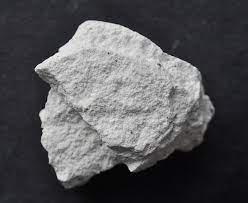
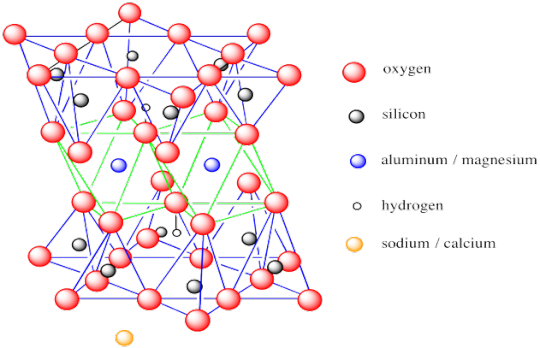
Montmorillonite is a hydrous, aluminum silicate in the smectite group (often you will hear bentonite and smectite used interchangeably).
Bentonite is formed by the alteration of volcanic ash when it comes in contact with water. Clays in general form from the chemical breakdown of feldspars (check out October's posts for more on feldspar!) and when ash gets thrown in the mix something very nasty occurs: swelling clays.
Bentonite increases greatly in volume when water is added...and decreases just as much when the water evaporates or gets absorbed in the groundwater system. This causes the popcorn texture you see in badlands topography.

Popcorn texture in Brushy Basin Member, Morrison Formation, near Evil Tree Bonebed. Sauropod rib found in it.
This can also cause structural damage. That is why the building around the Wall at Dinosaur National Monument had to be repaired a few years ago. Basically, the swelling of the bentonite split the foundation.
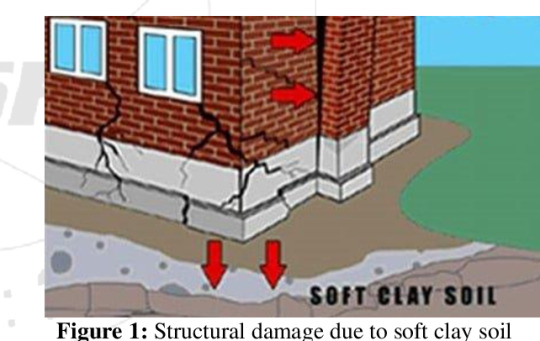
It also becomes very dangerous to drive on or walk on when it gets wet, becoming a slurry, sticky mess.
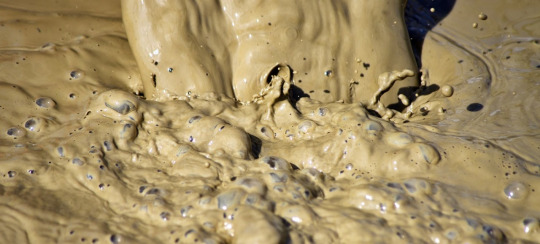
This is the main reason why we have to wait for summer to come before we head out to the dig site. We physically cannot get there until the Mancos Shale bentonite is dry enough to drive on.
Bentonite is not all bad though. It has some good uses too.

We actually use it to trap moisture in our skin and hair when we dry out. It's a natural sunblock and relieves burns and itching from bug bites. We even put it in Wendy's Frosty's to give them that smooth texture!

Bentonite is also used in agriculture as a natural pesticide, herbicide, and fungicide in fertilizers.
They also use it to coat drills in the oil industry to keep the drill bit lubricated, as well as coating well walls to keep them from collapsing. If you're a geek, like me, think Avatar, the Last Air Bender and the Fire Nation drill.

Hope you learned a little about bentonite today! Fossilize you later!
63 notes
·
View notes